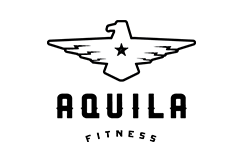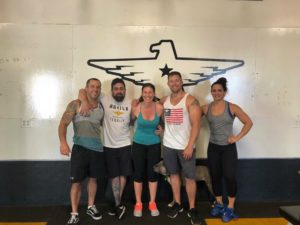Run 1 Mile
Rest 10:00 Minutes
Run 1 Mile
No Yogging!

9:30 Foundations with a demonstration of agility here. Agility is one of the 10 general physical skills. Agility is the ability to quickly change directions. Above is an obvious representation of such a skill. Sprinting one direction, quickly stopping, and heading back the other direction.
CrossFit is often criticized for lack of an agility component in our training. This mainly comes from sport specific training fans who train for sports involving significant lateral movement such as soccer, tennis, or basketball.
Well what about the agility component of Olympic lifts and gymnastic movements? In the Oly lifts, the lifter must move upward with maximal intensity, then in the blink of an eye, reverse their direction back downward to get under the bar. The most agile lifters lift the most. Think of a kipping pull up where you may be plummeting downward and swinging forward then instantaneously swing yourself upward and back. Or how about a real brain buster like Trav's dive roll yesterday. Running full speed forward, leaping head first into the floor and changing that linear momentum into rotational momentum that evenly distributes the force across the floor. You simply cannot argue the agility of a gymnast.
So as it turns out, we do work on a lot of agility in our functional movement regimen. The nay-sayers will then bring up the notion that we don't do enough lateral movement. We train too much in the sagittal plane (forward and back, up and down.) This is true, we do train sagittal for the most part, but I would argue that lateral movement, the way they are viewing it, doesn't really exist. In order to change directions, the body must lean away from its base of support, the feet, in the direction it wants to go and create force again along the sagittal plane. Also to do this effectively the athlete must have adequate mid-line stability, formerly know as core strength back in the late 80's.
Look at Suzi on the far right of the picture. She is falling in the direction she wants to go, but she is creating force on the ground in a vector straight through the top of her hear, the same way you would if you are standing still and vertical leaping. So agility in the realm of lateral movement is really a component of balance and explosiveness. You fall in the direction you want to go, and you vertical leap while falling that direction.
So the requirements for an elite level of agility really comes down to is explosiveness, balance, and mid-line stability. So lift weights, and do gymnastics. For all of those out there who are still stuck on agility ladders, mini hurdles, and cone drills; all of which are good exercises, it's time to get with the program. Athletes who play sports spend hours a week inadvertently working on foot work and quote un-quote lateral movement while they practice their particular sports. It is somewhat unproductive to spend their off-field training time working these same components in the gym. Get them strong and explosive, teach them balance, build rock solid midsections and you will see great increases in athletic performance.
To put it simply, with the limited time that most athletes spend in the gym, cross training is far more beneficial to the athlete than sport specific training.





